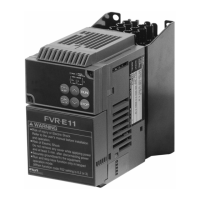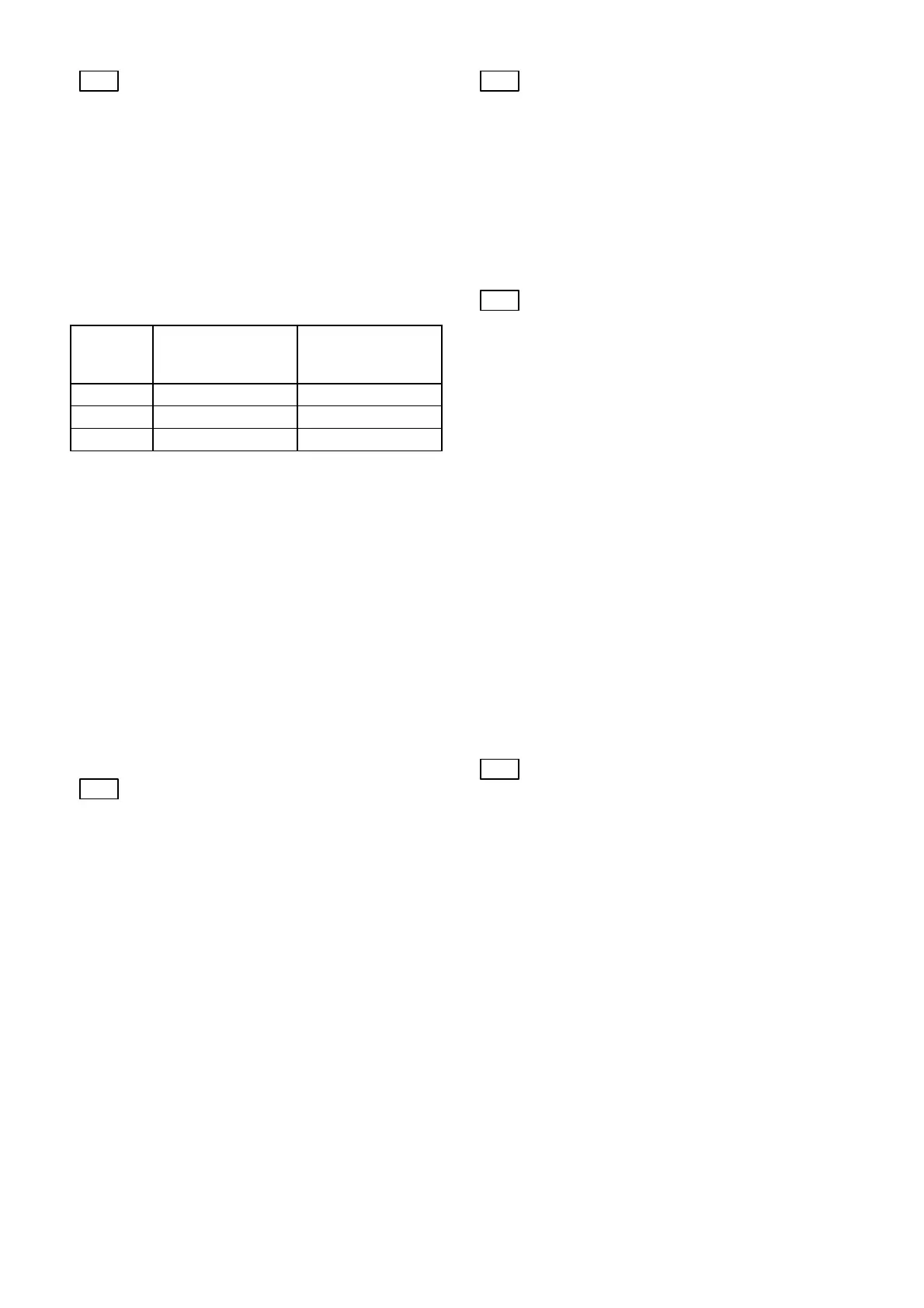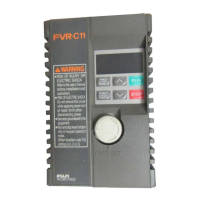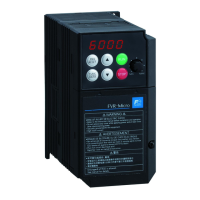5-33
H09
Start mode (Rotating motor pickup)
This function smoothly starts a motor coasting
due to an external force or the like after
momentary power failure.
The speed of the motor is detected upon power
recovery or restart and the same frequency as
that for the motor speed is output. Therefore the
motor starts smoothly without a shock. However,
when the coasting speed of the motor
converted in the inverter frequency exceeds 120
Hz, setting of F03 "Maximum frequency 1" or
setting of F15 "Frequency limiter (High)", the
regular starting method is adopted.
Setting Regular starting
Restarting after
momentary
power failure
0
Inactive Inactive
1
Inactive Active
2
Active Active
Description of setting
1:This function is effective when the setting of F14
"Restart after momentary power failure
(Operation selection)" is "2" or "3".
Starting is made at the same frequency as that
for the coasting speed.
2:Upon restart after momentary power failure,
operation command ON and other starting
methods, the speed of the coasting motor is
detected and starting is made at the same
frequency as that for the coasting speed.
Note) When this function is used, use the
following setting to detect the accurate
rotation speed of the motor.
When a motor other than the one made by Fuji
Electric is used or when the wiring length is long,
perform P04 Tuning.
H10 Energy-saving operation
When the output frequency for a small load is
constant (constant speed operation) and the
setting of F09 "Torque boost 1" is other than "0",
the output voltage is automatically lowered to
minimize the product (power) of the voltage and
the current.
Setting 0: Inactive
1: Active
Notes)
1. Use this function for fans, pumps or other
square reduction torque loads. If this function is
applied to a constant torque load or to an
application with a rapidly changing load, there is
a delay in the control response.
2. The energy-saving operation is automatically
canceled to resume regular operation during
acceleration or deceleration or when the torque
limiter function is activated.
H11 Dec mode
Select the stopping method of the inverter after
a stop command.
Setting 0: Normal
(Deceleration to stop based on data of
H07 "ACC/DEC pattern")
1: Coast-to-stop
Note) This function is not activated when the set
frequency is lowered to stop. The function is
activated only when a stop command is
input.
H12 Instantaneous overcurrent limiting
When the motor load abruptly changes to cause
a current exceeding the protective level of the
inverter to flow, the inverter trips due to the
overcurrent. The Instantaneous overcurrent
limiting function controls the inverter output
within the protective level even upon an
excessive load.
The operation level of the Instantaneous
overcurrent limiting cannot be adjusted. Use the
torque limit function to set on output limitation.
The torque generated by the motor may
become low in a Instantaneous overcurrent
limiting state. Therefore deactivate the
momentary overcurrent limit function for
applications such as the elevator where the
torque generated by the motor must not be low.
In this case, because the inverter trips due to an
overcurrent when a current exceeding the
protective level of the inverter flows, use forcible
stopping measures by a mechanical brake or
other protective measures.
Setting 0: Inactive
1: Active
H13 Auto-restart (Restart time)
When the power supply to a running motor is
shut off or power failure occurs and the power
supply is quickly switched to another system,
the phase of the voltage of the new system
deviates from the phase of the voltage
remaining in the motor and electrical or
mechanical trouble may be developed. When
switching the power supply system in a short
time, write the time for attenuation of the
remaining voltage from the motor after power
shutoff. The setting is effective during restart
after momentary power failure.
Setting range: 0.1 to 5.0 s
If the duration of momentary power failure is
shorter than the wait time data, restart is made
after this time. If the duration of momentary
power failure is longer than the wait time data,
restart is made after completion of operation
preparation of the inverter (about 0.2 to 0.5 s).

